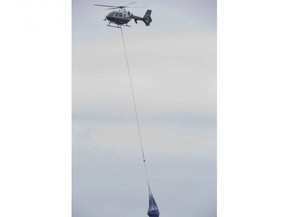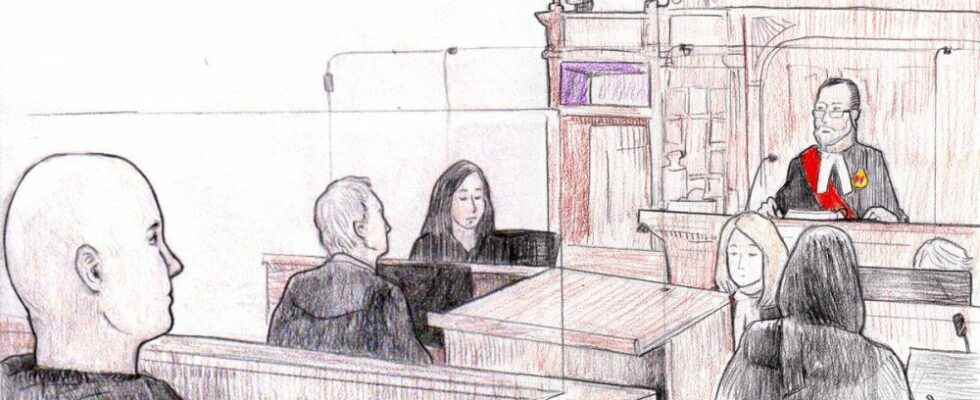ST. THOMAS – If not for the duct tape wrapped around his head and a wire cord knotted tightly around his neck, the cause of Ashley Pereira’s death might have been more of a mystery at autopsy.

ST. THOMAS – If not for the duct tape wrapped around his head and a wire cord knotted tightly around his neck, the cause of Ashley Pereira’s death might have been more of a mystery at autopsy.
During her testimony Tuesday, forensic pathologist Liza Boucher agreed during cross-examination by defense lawyer Andy Rady at the first–degree murder trial of Chad Reu-Waters that her cause-of-death opinion would have been “undetermined” without the tape and cord .
The body already was in an advanced state of decomposition when it was found in a freezer dumped over a Lake Erie bluff, east of Port Burwell, on May 6, 2019. Boucher had little extra to back up her findings that Pereira, 33, died of ligature strangulation or asphyxiation.
There were no soft tissues or fluids to test. There were no other confirmed external injuries. Some of the body had “skeletonized,” or been reduced to bone. Other parts had turned waxy, a sign it had been kept in the cold for a long period of time, she testified.
“The most reasonable cause of death was ligature strangulation or asphyxiation,” she said.
And, Boucher added, there was a possibility the body had been frozen.

Reu-Waters, 48, of Jarvis has pleaded not guilty to first-degree murder and indecently offering an indignity to human remains by concealing them in a freezer.
Boucher and forensic anthropologist Tracy Rogers were the final two Crown witnesses before assistant Crown attorney Meredith Gardiner closed the prosecution’s case.
Rady announced to the jury the defense won’t call any evidence.
The closing arguments and Superior Court Justice Kirk Munroe’s final instructions will be presented on Monday before the jury begins its deliberations.
It’s been a weird case. Pereira vanished in March 2002, about seven months after he and Reu-Waters had been on the same jail range at Maplehurst Correctional Complex in Milton.
The jury has heard the body was found 17 years later by a hiker who spotted the locked chest freezer down an embankment and broke open the padlock to see what was inside.
It also has heard how Reu-Waters’ son Sam Waters and two friends retrieved the freezer from the basement of a Simcoe hobby store run by Waters and threw it off the cliff in the middle of the night four days before it was found.
There’s been testimony from Reu-Waters’ ex-wife, his ex-girlfriend, and his ex-girlfriend’s best friend who all said Reu-Waters often would brag that he’d killed someone. Specifically, he told his ex-wife and ex-girlfriend he killed Pereira by strangling him, then stored the body in a freezer, and would threaten to implicate them in the homicide if they told anyone.
-

Body-in-freezer trial: Woman testifies ex threatened to implicate her in death
-

Accused in body-in-freezer murder case often boasted of killing: Ex-wife
-

Body-in-freezer trial: A hike, a ‘weird’ item, a grisly discovery
-

Jury picked for mysterious body-in-freezer murder trial
Under questions from assistant Crown attorney Andrew Paul, Boucher said she was briefed on the circumstances surrounding the body’s discovery before starting the autopsy. Pereira’s identity was confirmed through dental records.
What she saw when she began the examination was that silver duct tape had been wrapped around the head several times from the forehead to the chin, covering the whole face including the nose and mouth. The tape covered parts of a Pereira tuque was wearing and the tape roll was still attached.
The ligature was knotted at the back of the neck and was secured so tightly that there was just enough room for scissors to cut it away.
There was some duct tape around the mid-section that almost wrapped around the body and more tape around the right hand.
Boucher agreed with the defence’s suggestion she could not say when the ligature was put around the neck or when the duct tape was wrapped around the head.
A CT scan revealed no other relevant findings. There were no bodily fluids left to test, but toxicologists did examine a piece of liver and found no evidence of drugs.
Only one internal injury was detected, a small fracture in Pereira’s thyroid bone, found in the neck. That finding, Boucher said, “supports that there was pressure applied to the neck.”
Rogers, a forensic anthropologist and the director of forensic sciences at the University of Toronto in Mississauga, testified she is a consultant with the Ontario Forensic Pathology Service said she was called in to examine six photographs of Pereira’s thyroid bone.
She tested the fracture, that could be seen on the inside and outside of the bone, would have happened around the time of death because the fracture had a “curvyedge” to it indicating there was some moisture in the bone structure when it broke.
She said thyroid cartilage begins to harden into bone as people age. Pereira’s thyroid bone hadn’t completely hardened.
In cross-examination, Rogers said she could not accurately say when the bone fractured and that the break could have happened months after death depending on the environmental conditions, such as if it had been kept in a freezer, as was suggested by Rady.
Closing arguments are expected Monday.
